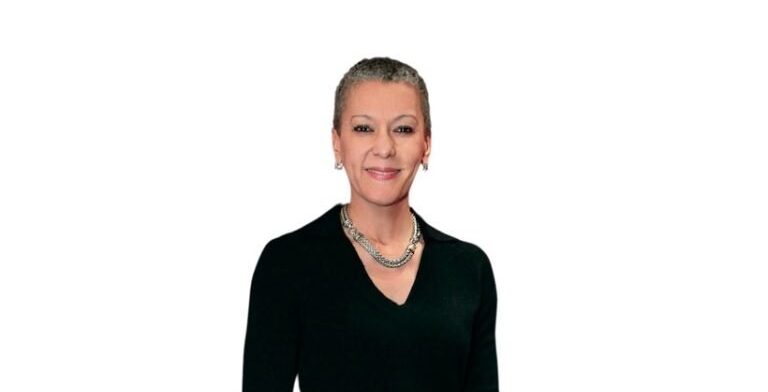Companies in the United States spend approximately $14 billion a year on leadership development training. In fact, a quick Google search triggered 787,000,000 results in less than 0.61 seconds. Yet most of this training falls short all too often because it lacks relevance. Further, much of it doesn’t prepare leaders for situations like we’ve faced this year, including navigating this new environment—particularly around the majority of staff working from home—launching new products in the midst of economic and social uncertainty and completely overhauling workplace culture to become a more diverse and inclusive workplace. However, by leveraging effective tools and resources, business leaders can build high-performing organizations, and yet, we often forget that even the best of leaders need guiding.
As a whole, companies spend a great deal of time—and money—caring for, nurturing and developing talent within the organization. Yet, while the pipeline is critical, leaders themselves and their own development are often forgotten. CEOs and senior leaders must keep raising their game and are often put into situations they’ve never encountered before, regularly having to make decisions concerning matters they’ve never faced before. These stresses require leaders to acquire new talents and new tools to adapt. So, who takes care of the “carer”? If we invest in our senior leaders, can we not only build better-performing organizations, but also create better leadership?

“I don’t know that I was really prepared to take on the CEO role. I knew I was ready to lead, I had earned the right to step into the leadership role, but as a woman I didn’t have one female leader role model throughout my career. I also had never worked for a company with a woman in the top role and don’t think I ever had really strong CEOs that I would emulate,” says Joanne McKinney, CEO of Burns Group, an advertising and brand consulting agency. “When being offered the role, I probably should have had more explicit dialogue around the expectations and KPIs for the job. While I was excited and knew what kind of impact I wanted to make, I had very little knowledge around the complexity of the role and what it would take to succeed.” There is a perception that once you’ve made it to the top, the investment in your own skills and development stops, when in fact it becomes that much more important to both the individual leader’s and company’s success.
Leaders are expected to be confident and show no signs of weakness, especially once they ascend to the CEO seat. CEOs need astute and customized mentoring by those who have been there before, have practical advice or at the very least can offer counsel from lessons learned. And tapping into a network of advisors is critical. “I started off my career believing that if I could be the expert that I could quickly rise to the top. I learned midway through my career that being that expert wasn’t sufficient. I had no following and no network to call upon, nor individuals that would call on me other than as an expert. Because of this, I had no true mentors looking at my career trajectory nor giving me advice,” according to Roger Arrieux, New York managing partner at Deloitte. “I had to expand my network, to expand my development. That network soon started to call on me. That very vast network has catapulted me. It has also provided me with counsel and while early on in my career I learned by virtue of making a mistake, the network I’ve developed has invested in my continued learning and my success as a leader.”
Finding a mentor as a leader isn’t always easy and many seek mentorship from their peer networks. “I look at many of my peers and understand that we mentor each other. We help each other a great deal and that’s important to share because as you go through this journey of leadership and development, you need real allies and people who will tell you truth,” says Susan Chapman-Hughes, head of digital, data and operations at American Express and who sits on the board of directors at J.M. Smucker Co.

Most CEOs and senior leaders of large organizations have had the benefit of mentoring and other developmental programs, as well as stretch roles. Leaders need continued support in order for good outcomes to follow. However, support doesn’t always have to come within the company you work for. It’s a combination of continued investment in your skills and developing relationships that you can lean into, all while creating a plan for yourself. Chapman-Hughes says, “I also think individual leaders need to have a plan. You use your outside to help you inside. How do you help grow in other areas if you’re only looking internally? Serving on nonprofit boards has given me the additional opportunity to work on the skills that I need to work on in an environment where the stakes are very low. I can make some mistakes that will not kill my career. These opportunities have given me the chance to work on myself, develop new relationships and build my network. All of this plays into my plan and working the plan to make it happen.”
McKinney agrees. “When I became CEO, I think I figured out my deficits pretty quickly in the process because I don’t think any role that you have in advance of becoming CEO really prepares you for the role,” she says. “If you enter any new role just by doing what you did well in your past role, you’re not doing the new job you’re supposed to have. You have to force yourself out of that comfort zone, push yourself to keep learning. This was very intimidating for me, and I was doing things I had never done in my career.”
Looking beyond the four walls of your company can be critically important. Having networks and mentors to call upon can make all the difference. “I called every leader that I knew and asked them to spend an hour with me on the phone,” McKinney says. “I was very lucky to have people from different parts of my career lean in and give me their time. I was able to ask them really specific questions about what to do in various aspects of the job, what could success look like, challenges they faced, problems they’ve experienced. It was a great starting point for me.”
There is always self-doubt. It’s natural and occurs in everyone. Yet despite the billions spent by companies in leadership training, self-doubt remains across the C-suite. However, we know that when CEOs and senior leaders are supported, good outcomes follow. Those support mechanisms will occur inside and outside the company. “Building an apprenticeship culture is one way to require leaders to invest in themselves through different trainings and continued education,” Arrieux says. “However, this type of culture is also an opportunity to bring people together to learn and to connect, to network and socialize. I think it’s critically important that organizations invest in their talent but also invest across many different dimensions, not solely from an academic perspective but also creating some degree of balance between professional and personal. This is paramount in developing good leaders.”
When you’re at the top or making your way there, the individuals who can understand what you face in your role have thinned out. The rungs of your career ladder have deepened, and your peer pyramid has become narrow. McKinney states, “Leading a smaller organization, I don’t have the vast resources a large company might have. I’ve had to look outward, joining a lot of outside organizations. I am literally gathering peer groups where I can really exploit as much learning as I can get my hands on. This is a great way to invest in myself and my network and honing my skills as a leader.” If we forget about taking care of the carer, ultimately, we might just care less about the rest of the organization.








